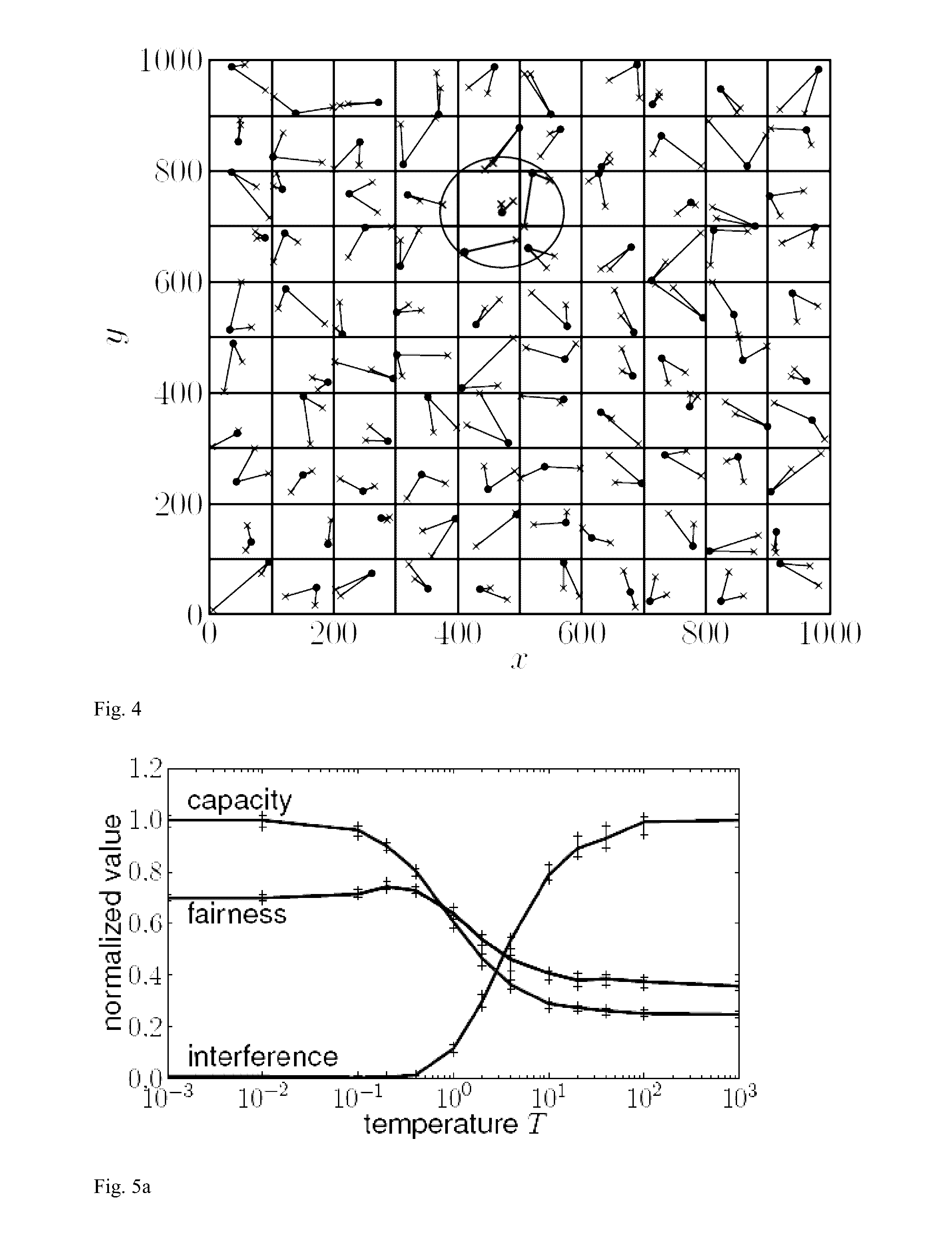Method to optimize the communication parameters between an access point and at least one client device
a communication parameter and client device technology, applied in the direction of electrical equipment, digital transmission, data switching networks, etc., can solve the problems of not being able to capture the granularity of interference between any two cells, requiring a centralized knowledge of interference graphs, and not providing optimality guarantees
- Summary
- Abstract
- Description
- Claims
- Application Information
AI Technical Summary
Benefits of technology
Problems solved by technology
Method used
Image
Examples
Embodiment Construction
[0031]The following detailed description is believed to be particularly applicable to communications and communications devices conforming to the 802.11 standard and variants thereof (e.g., 802.11b, 802.11g, etc.) and hence will be primarily discussed in that context herein. The present invention should, however, not be understood to be limited to communications and communications devices conforming to the 802.11 standard.
[0032]A block diagram of an exemplary wireless local area network (WLAN) access point 1500 (e.g., a wireless router) according to one embodiment of the invention is illustrated in FIG. 15. The access point 1500 includes and is controlled by a processor 1510. Connected to the processor 1510 is a memory 1520 which stores the program corresponding to the SAW. The Access point 1500 comprises a network controller 1530 which is the interface with the RF Front-end 1540. The Network controller 1530 is in charge of the wireless protocol with the remote devices.
[0033]The acc...
PUM
 Login to View More
Login to View More Abstract
Description
Claims
Application Information
 Login to View More
Login to View More - R&D
- Intellectual Property
- Life Sciences
- Materials
- Tech Scout
- Unparalleled Data Quality
- Higher Quality Content
- 60% Fewer Hallucinations
Browse by: Latest US Patents, China's latest patents, Technical Efficacy Thesaurus, Application Domain, Technology Topic, Popular Technical Reports.
© 2025 PatSnap. All rights reserved.Legal|Privacy policy|Modern Slavery Act Transparency Statement|Sitemap|About US| Contact US: help@patsnap.com



